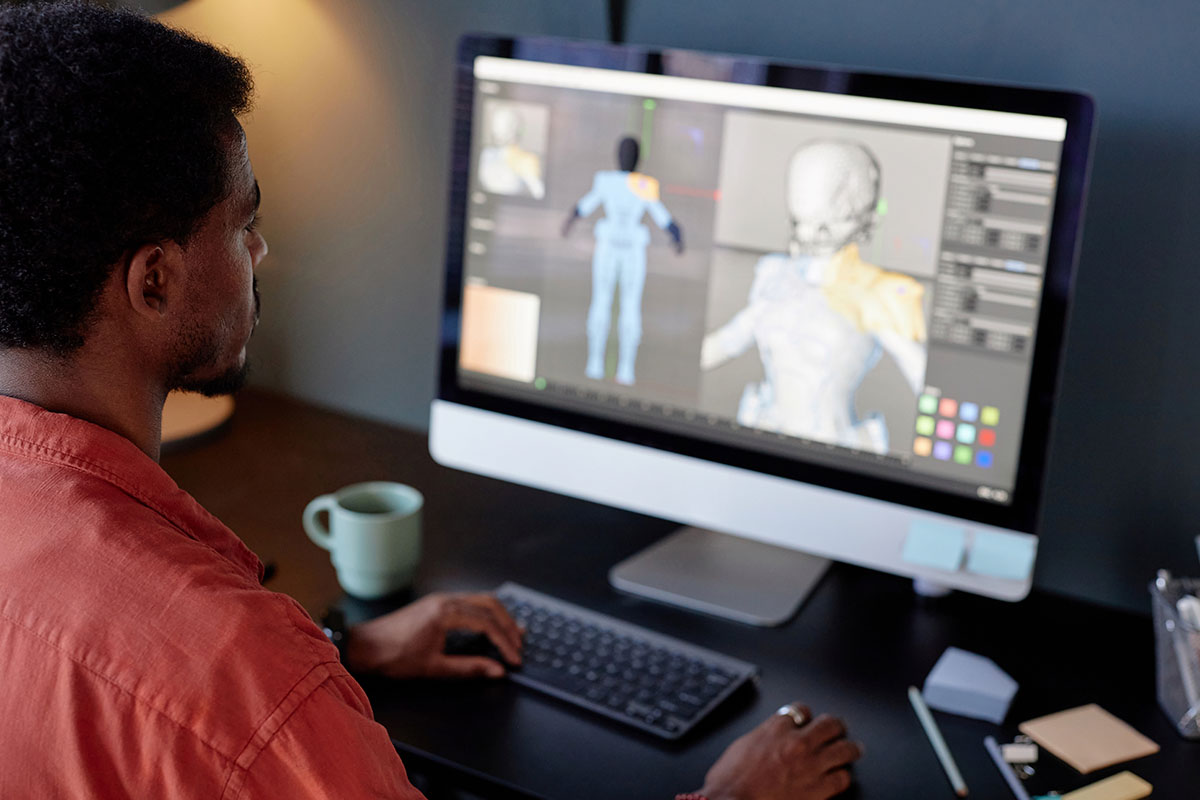
Animation Companies in South Africa: Animation Principles
In the early days of animation, Disney’s Snow White and the Seven Dwarfs changed the game. But what made it stand out was not just its story—it was how the animators made the characters feel alive. They used a set of principles that not only guided how characters moved, but also how they expressed emotion and personality. These principles, like timing, squash and stretch, and anticipation, allowed the animation to feel real, even though the characters were drawn or created by hand. Fast forward to today, and those same principles continue to influence how we create animation—whether it is hand-drawn, 3D, or motion graphics. While the tools and technologies have evolved, the core principles remain the same, helping animators design scenes that are both believable and engaging. In this article, we will explore the origins of these principles, how they’ve changed over time, and how they continue to guide modern animation, including the work coming from animation companies in South Africa.
The Origins of the Principles of Animation
The principles of animation were first brought into the spotlight by Disney animators Ollie Johnston and Frank Thomas in the 1930s. The duo, along with other Disney artists, developed a set of guidelines that would help animators create more believable, emotional, and engaging animations. This set of principles was formally compiled in their book The Illusion of Life: Disney Animation, published in 1981. The goal was to create animation that not only looked realistic but also conveyed a sense of life and personality to the characters and objects on screen.
While these principles were initially applied to hand-drawn animation, they have since transcended traditional methods, influencing modern animation techniques such as 3D animation and motion graphics. Animation companies in South Africa have also been pivotal in experimenting with these evolving techniques, contributing to the global animation scene. The basic principles still hold value, but they have been adapted and expanded upon to suit new technologies and techniques.
The Evolution of Animation Principles
As technology progressed, animation also evolved. The transition from 2D hand-drawn animation to 3D computer-generated imagery (CGI) introduced new possibilities and challenges for animators. The principles of animation, which once applied strictly to traditional techniques, have now been adapted for modern methods. The rise of motion graphics has also added a new dimension, where the focus may shift from character-driven narratives to abstract or symbolic designs that still follow the same basic principles of animation.
The key to adapting these principles across different forms of animation lies in their core purpose: to create movement that feels natural and alive, no matter the medium. While the tools have changed, the principles remain as relevant as ever in shaping how we perceive animation, whether it is a feature film, a 3D model, or a dynamic piece of motion graphics.
The Twelve Principles of Animation
The twelve principles of animation, developed by Johnston and Thomas, form the foundation of what we know as effective animation. These principles are integral to shaping the actions and behaviours of animated characters and objects, allowing animators to create scenes that feel both believable and engaging.
- Squash and Stretch
This principle refers to the deformation of an object or character when it moves. The goal is to make actions appear more fluid and realistic, giving weight and flexibility to characters and objects. For example, a bouncing ball might stretch when it hits the ground and squash when it rebounds. - Anticipation
Anticipation prepares the audience for an action. It creates a sense of expectation, so when the actual movement happens, it feels more dynamic and satisfying. For example, a character might crouch before jumping, signaling that a leap is about to happen. - Staging
Staging is about presenting an action in such a way that the audience’s attention is drawn to the most important element of the scene. This is achieved through composition, lighting, and timing. A well-staged scene will make it clear what the focus is, whether it is a character’s expression or sn important moment in the action. - Straight Ahead Action and Pose to Pose
These are two methods for creating animation. Straight ahead action involves drawing each frame in sequence, allowing the action to unfold naturally. Pose to pose, on the other hand, starts with key poses and fills in the in-between frames. Both methods can be used to achieve different effects depending on the desired outcome. - Follow Through and Overlapping Action
Follow through ensures that the secondary parts of a character, such as clothing or hair, continue moving after the main action. Overlapping action refers to different parts of the body or objects moving at different speeds. Together, they create a more natural, fluid movement. - Slow In and Slow Out
This principle describes how objects accelerate and decelerate. Movements in the real world do not start or stop abruptly; they build up speed and slow down gradually. Animating with slow in and slow out helps create more realistic motion by giving characters and objects a sense of weight. - Arcs
Natural movement in the real world follows curved paths, and arcs help replicate that realism in animation. For instance, a character’s arm will typically follow a curved path when reaching for an object. Animators use arcs to create smoother and more organic movements. - Secondary Action
Secondary actions add complexity and depth to a scene. They are additional movements that complement the main action without distracting from it. For example, a character might be walking while their hair moves in the wind or their hands gesture as they speak. - Timing
Timing refers to the speed at which an action occurs. The number of frames allotted to a particular movement determines how fast or slow it appears. Good timing ensures that actions feel natural and that the character’s emotions and intent are communicated clearly. - Exaggeration
Exaggeration is about enhancing certain features or actions to make them more dramatic. This principle helps animate characters in a way that emphasises emotions, making them more visually striking. For instance, a character’s reaction to surprise might involve exaggerated eye movements or body posture. - Solid Drawing
Solid drawing means giving animated characters and objects volume, weight, and depth. Even in 2D animation, the goal is to make shapes and figures appear three-dimensional, as if they could exist in the real world. In 3D animation, this principle ensures that the models maintain a realistic sense of space. - Appeal
Appeal is about making characters and actions interesting and engaging to the audience. This does not mean making everything cute or overly charming, but creating designs and actions that are visually appealing and memorable.
Applying the Principles in Modern 2D, 3D, and Motion Graphics
Today, these principles are applied not only in traditional 2D animation but also in 3D animation and motion graphics. In 3D animation, the principles still play a vital role in giving digital characters lifelike qualities. Animators working with 3D models must pay careful attention to timing, anticipation, and the weight of actions, just as they would in hand-drawn animation.
Motion graphics, which often feature abstract designs and animations, also rely on many of the same principles. For example, motion graphics rely on timing and anticipation to guide the viewer’s attention, and exaggeration is often used to make the movement of shapes or text feel more dynamic.
Animation Companies in South Africa
In South Africa, the animation industry has seen a rise in the number of studios and educational institutions adopting these principles. Animation companies in South Africa have embraced these principles to create high-quality animated works for both local and international markets. These companies apply both traditional techniques and innovative technologies to ensure their projects feel authentic and impactful.
Education also plays a crucial role in the growth of South African animation. Schools like The Animation School and SAE Institute are shaping the next generation of animators, offering programmes that emphasise the foundational principles of animation. By teaching students the importance of timing, arcs, and anticipation, these institutions are helping students master animation techniques that are applicable across 2D, 3D, and motion graphics.
Challenges and Innovations
Although the principles of animation have been well established, applying them in the context of modern animation technologies presents challenges. One of the biggest challenges is maintaining the same level of expressiveness and believability when working with digital tools, which can sometimes feel mechanical.
However, innovation in animation tools and techniques continues to make these challenges more manageable. For example, advancements in motion capture technology and AI-assisted animation software are helping animators achieve more lifelike movements while still adhering to the principles that make animation feel real and engaging. Many animation companies in South Africa are embracing these new technologies to push the boundaries of what is possible.
Conclusion
The principles of animation have been guiding animators for nearly a century, and despite the many advancements in tools and techniques, they remain just as vital today. They shape the way characters move, the way stories unfold, and how we connect with the world on screen. These principles are not just rules—they are the secret behind every fluid gesture and every moment in animation.
Even as the methods of creating animation have shifted, the core ideas continue to bring consistency and purpose to each new project. For animators around the world, including animation companies in South Africa, these principles are the threads that tie together creativity, technology, and emotion. Without them, movement would lose its impact, and animation would lose its magic.
In the end, it is the application of these timeless principles that keeps animation grounded—turning simple drawings into experiences that still manage to captivate audiences, generation after generation.
Got an animation idea that needs some direction? At Sound Idea Digital, we can help you figure out how to make it work. Contact us and let’s talk about your project.
We are a full-service Web Development and Content Production Agency in Gauteng specialising in Video Production, Animation, eLearning Content Development, Learning Management Systems, and Content Production.
Contact us for a quote. | enquiries@soundidea.co.za | https://www.soundideavideoproduction.co.za| +27 82 491 5824 |

